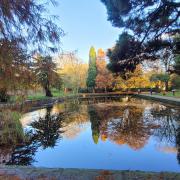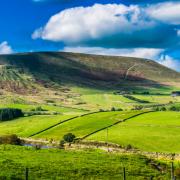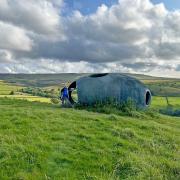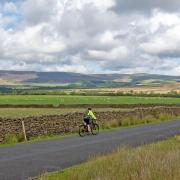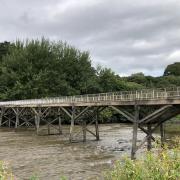For almost 25 years, outdoor writers and photographers Dennis and Jan Kelsall have produced guides and articles covering many of the country’s popular walking destinations. Here, Dennis picks five of his favourites.
During the last 25 years, I’ve covered a fair chunk of the country researching guides and articles, and without doubt, Britain is blessed with many beautiful and impressive landscapes. But despite the obvious attractions of the ‘big-name’ walking destinations, I’m still surprised by what actually lies on my own doorstep. Although I’ve lived here all my life, I’m still discovering new corners.
But what are my favourites? A difficult question against so much choice. The intrinsically beautiful AONBs of Bowland, and Arnside and Silverdale, or the wild Pennine Moors offer obvious suggestions, but there’s a wealth of other unspoiled countryside, woodland, waterside and coast too. An area I’m repeatedly drawn back to, however, is the Lune Valley.
Although only 53 miles from source to sea, its catchment encompasses an incredible variety of landscape and heritage. We Lancastrians regard it our own, indeed it gives the county its name; yet it seeps out of the northern Howgills and doesn’t leave Yorkshire until the Devil’s Bridge at Kirkby Lonsdale.
But surrounding the streams and rivers feeding those last few miles, there’s no shortage of superb countryside, and it is from this small corner my selection comes.

The highs and lows of Lancashire
Furthest from the sea is Gragareth, the highest point in Lancashire’s post-1974 boundaries. Its long summit ridge overlooks the beautiful Leck Beck valley, where more than 47 miles of caves have been charted since the first recorded descent of Bull Pot in 1899.
My walk heads upstream from Cowan Bridge beside Leck Beck into Ease Gill, where disappearing streams, dry ravines and mysterious holes hint of the nether world. Begging indulgence, I’d sneak over the county boundary onto Crag Hill and Great Coum for grand views over Barbondale and Dentdale before an easy lope past the County Stone onto Gragareth.
The quick way down is via the Three Men of Gragareth, an imposing group of sentinel cairns, and Leck Fell House, but a more strenuous descent is to Masongill and back on field paths and lanes. Either way it’s a grand horseshoe.

Just for the view
My second walk is Clougha Pike, the westernmost feature of the Bowland massif above Lancaster.
While the tops behind are largely flanked by a wilderness of peat moss and bog, Clougha is relatively easily attained and offers superb views that encompass the Isle of Man, southern Lakeland, the Clwydian Hills, Western Pennines and Yorkshire Dales.
Rigg Lane car park is a good place to begin, winding north across heathland below former stone quarries towards the River Conder. The route past Conder Head is indistinct and sometimes wet, but firmer ground lies above, passing crumbling grouse butts before gaining the ridge from Grit Fell. Clougha’s trig column sits on a rocky edge looking out across Lancaster and is a place to linger at the quiet end of day. It’s then downhill past the rocky outcrops of Clougha Scar and Windy Clough before picking up a stream through delightful woodland to regain the heath behind the parking.

A splendid waterfall
Devoid of mapped paths, I stumbled upon (or is it into?) Roeburndale somewhat by accident and found it full of beauty. The valley contains one of the largest remaining areas of ancient semi-natural woodland in Lancashire, which once extended across much of Bowland’s lower flanks and was part of the medieval Bowland Forest, a royal hunting preserve where game was protected by Forest law.
Reminders persist in names such as Bowskill Wood, Buckbank Wood, Hunts Gill and indeed Roeburndale itself, and while wolf and boar might be no more, deer and hare still roam free. Climbing from the valley to the moorland rim, the return opens fine views to Ingleborough and eventually leads past a splendid waterfall where Goodber Beck tumbles 30 feet over a rocky shelf into a wooded ravine.
Further along, there’s another sylvan corner hiding the confluence of Roeburn with Lambclose Syke. The final stretch follows farm track and lane past Lower Salter, where a tiny Methodist chapel is a focus for the scattered hill-farming community.

Sailors and Monks
Lancaster grew as one of England’s foremost ports, its wharves handling cargoes from the Americas and West Indies. But towards the end of the 18th century, a silting river threatened prosperity and a new coastal port was established at Glasson Dock to handle ocean-going vessels. Cargoes were floated upriver on barges until the Lancaster Canal spur, opened in 1825, created a more reliable link.
The railway’s arrival in 1883 further expanded capacity and, although international trade later declined, Glasson remained a busy hub for coastal trade and ship repair into the 20th century. Today, the canal basin serves leisure craft, but some commercial traffic still uses the port.
My walk climbs beside the spur’s locks before breaking off across fields reclaimed from tidal marshes to the coast at Bank End Farm. Despite an almost flat landscape, scattered drumlins enable surprising views. The coastal marshes attract winter bird-life, while further on, shingle and rock have their own fascination. Of interest too is the ruined chapter house of St Mary’s Abbey, once one of the county’s richest religious houses, while off-shore is the Plover Scar light, restored after being struck by an incoming cargo vessel in 2016.

A poignant moment
My final walk takes in Sunderland, past which the Lune escapes to the sea. Like Glasson, it was a transhipment port for Lancaster, the former warehouses now converted to dwellings.
As the road is flooded by the tide, I start from Potts Corner and ramble across fields defined by drainage ditches and flood embankments. Beyond the village, take to the shingle around the point - who doesn’t love the shore? Partway back, overlooking the marsh is Sambo’s Grave, the lonely resting-place of a child slave from Africa.
Arriving around 1736 as servant to the captain of a trading vessel, the lad died here while his master conducted business in Lancaster. Not being Christian, he was buried in an unmarked grave, the memorial later erected by the vicar and touchingly still tended by local schoolchildren.
















